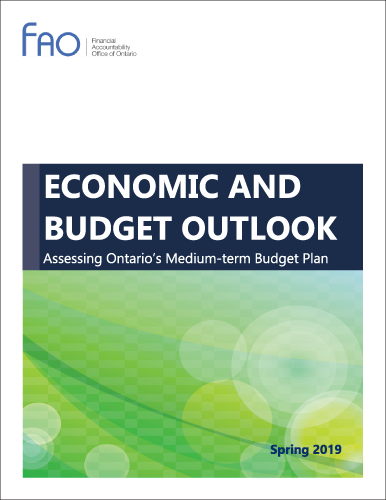Economic and Budget Outlook, Spring 2019

Based on the FAO’s outlook for slower economic and revenue growth, and incorporating the government’s spending plans, the FAO projects Ontario’s budget deficit would decrease to $10.8 billion in 2019-20, down modestly from $11.7 billion in 2018-19.
Economic and Budget Outlook, Spring 2019, Financial Accountability Office of Ontario, 2019.

